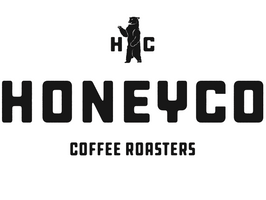
If you would have asked us 5 years ago why your coffee is sour, the answer likely would have been that it was under extracted; either your grind is too coarse, or you were using too much coffee for the amount of water you’re using. Today with scales and refractometers being two of the most commonly used tools in specialty coffee, it's easy to consistently control your brew ratios and check for proper extraction levels. Why is it then, that the specialty coffee industry has developed a reputation for sour and polarizing coffees despite the ever-increasing quality of green coffee available, and abundance of tools to ensure consistent preparation? Lets take a look.
The current trend in specialty coffee seems to be of the "brighter is better" philosophy, with emphasis on intensely high acidity. While we also love coffee with bright, lively acidity, we feel that these types of coffees must have adequate roast development and flavor balance to be accessible and enjoyable. Without adequate development, these strictly acidic coffees lack sweetness, complexity, and clarity of flavor. While coffees fitting this trend can seem exciting and have lots of snap on the cupping table, they become one-dimensional and sour when brewed, even at proper extraction levels.
This phenomenon has been brought to our attention again and again over the past few years by the increasing number of people we've come across who stay away from specialty coffee altogether, claiming that the coffee is just too sour. More often then not, these are people who express genuine interest in the idea of specialty coffee, but can't get past the tangy taste they associate with our industry. Although there may be numerous contributors, we believe the sour coffee epidemic is primarily the result of the following three things:
1. Coffee professionals taste and experience coffee in different ways than most consumers do. (Cuppers vs. drinkers -- a whole topic in and of itself).
2. The misconception that the lighter you roast, the more varietal characteristic you accentuate.
3. Knowledge of how to roast lightly and still achieve balanced sweetness and acidity.
Regardless of the cause of this sour coffee phenomenon, the biggest problem with sour coffee is that it just doesn't resonate with the everyday consumer, which is ultimately who we are serving. We've seen specialty coffee go from providing inclusive, life changing (for the better) experiences to unintentionally alienating prospective customers who show true interest in what we do; people who want to buy in, but can't justify paying a premium for coffee that tastes worse to them than what they're currently drinking. Higher quality green coffee, a beautiful seed to cup story, and having your coffee prepared by highly skilled baristas is all for naught if the final product is simply not enjoyable.
We believe roasting balanced coffees that possess acidity, sweetness, and complexity all playing together in harmony is a win-win. Balanced and adequately developed profiles provide the best avenue for highlighting varietal characteristics in truly special coffees, and also resonate with the day-to-day customer (both current and prospective), providing a better path for real, long-term sustainable growth for the specialty coffee industry. One thing we can say for sure: At HoneyCo, balance is back.
--
This entry was co-written with coffee friend, Chris Baca.
